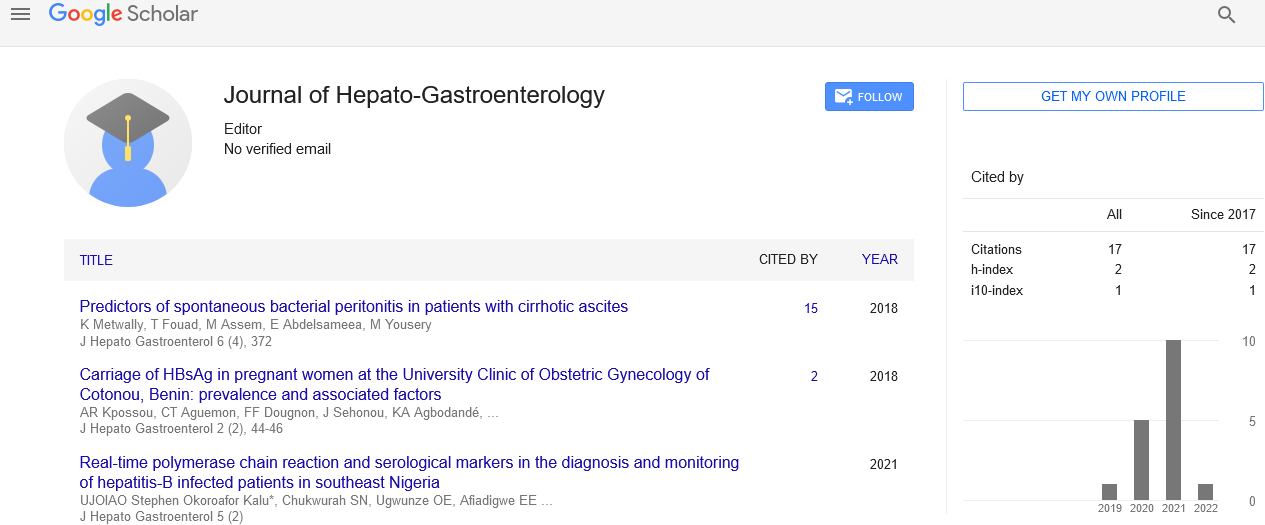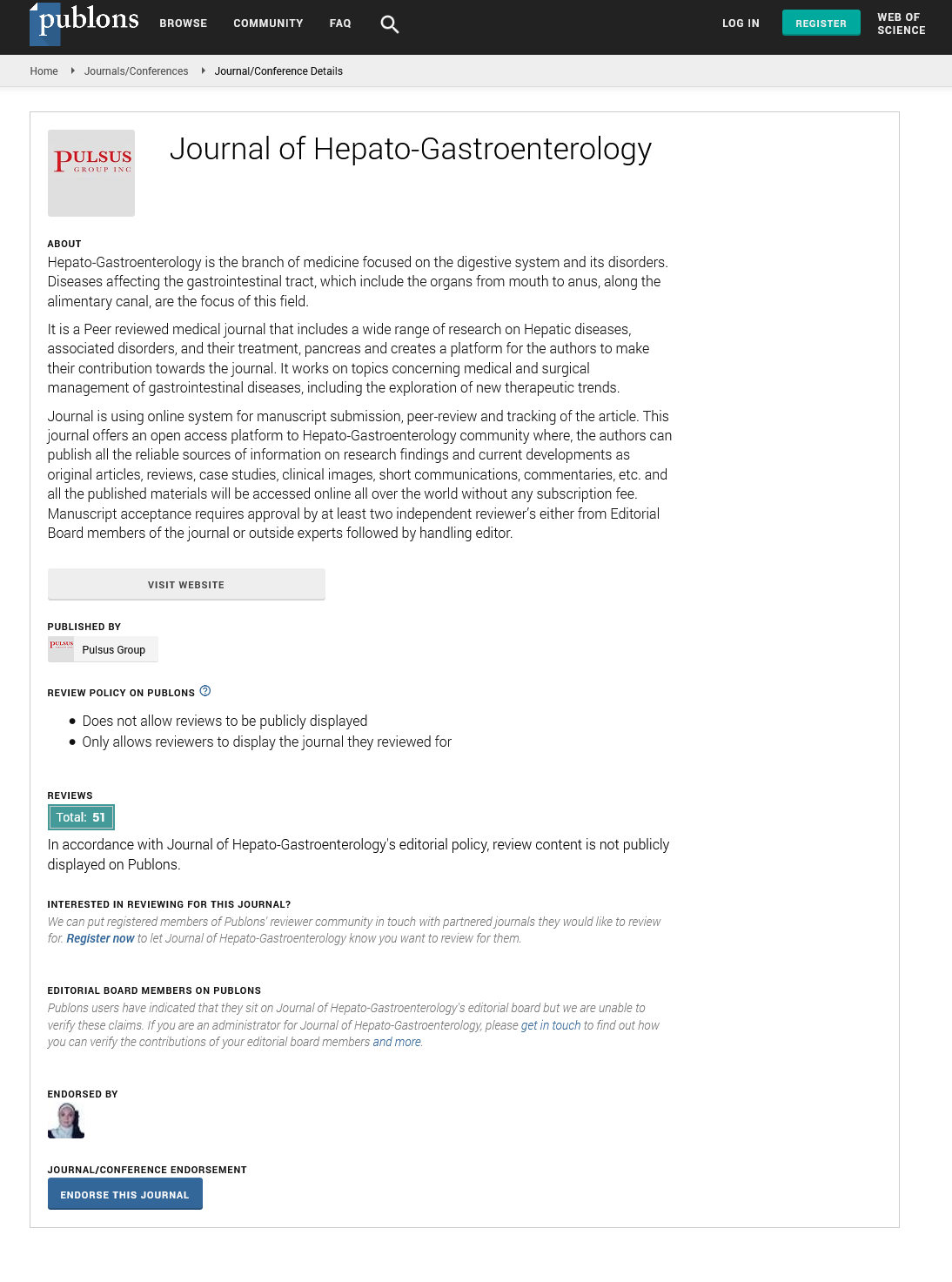Redefined endovascular trends in management of Budd Chiari syndrome to achieve better mid-term patency and survival rates
Received: 16-Dec-2018 Accepted Date: Feb 04, 2019; Published: 08-Feb-2019
Citation: Arun G, Ajit Y, Mishra N, et al. Redefined endovascular trends in management of Budd Chiari syndrome to achieve better mid-term patency and survival rates. J Hepato Gastroenterol. 2019;3(1):1-5.
This open-access article is distributed under the terms of the Creative Commons Attribution Non-Commercial License (CC BY-NC) (http://creativecommons.org/licenses/by-nc/4.0/), which permits reuse, distribution and reproduction of the article, provided that the original work is properly cited and the reuse is restricted to noncommercial purposes. For commercial reuse, contact reprints@pulsus.com
Abstract
Background: Endovascular interventions have become the treatment of choice in patients with Budd Chiari Syndrome who are refractory to medical management alone. We studied the long-term stent patency and survival at a tertiary care center in north India.
Methods: Single-center retrospective analysis was done in 46 patients of primary Budd Chiari Syndrome, who underwent endovascular intervention. Patency rates and survival analysis was done for median duration of 19.9 months (range 12 days to 78.4 months).
Results: Patients underwent hepatic vein/inferior vena cava recanalization and/or Transjugular intrahepatic portosystemic shunt. Hepatic vein occlusion was present in 47.8%, IVC involvement in 28.2% and both IVC and Hepatic vein involvement in 23.9% cases. Technical success was achieved in 95.6% patients and clinical success in 86.3% patients. The cumulative primary patency rates at 6 months, 12 months, 2 years, and 5 years were 92.6%, 85.3%, 73.1% and 70.7% respectively. Re-intervention was done in 7 patients. Secondary patency rates at 6 months, 12 months, 2 years and 5 years were 100%, 100% 100% and 100% respectively. The cumulative overall survival at 6 months, 12 months, 2 years, and 5 years were 95.1%, 90.2%, 87.8% and 87.8% respectively.
Conclusion: We conclude that endovascular intervention has excellent outcome in management of Budd Chiari Syndrome cases refractory to medical treatment. Besides orthotopic hepatic vein recanalization, physiological recanalization in form of accessory hepatic vein stenting or collateral vein stenting are also alternatives. TIPS should only be offered where physiologic recanalization is not feasible.






